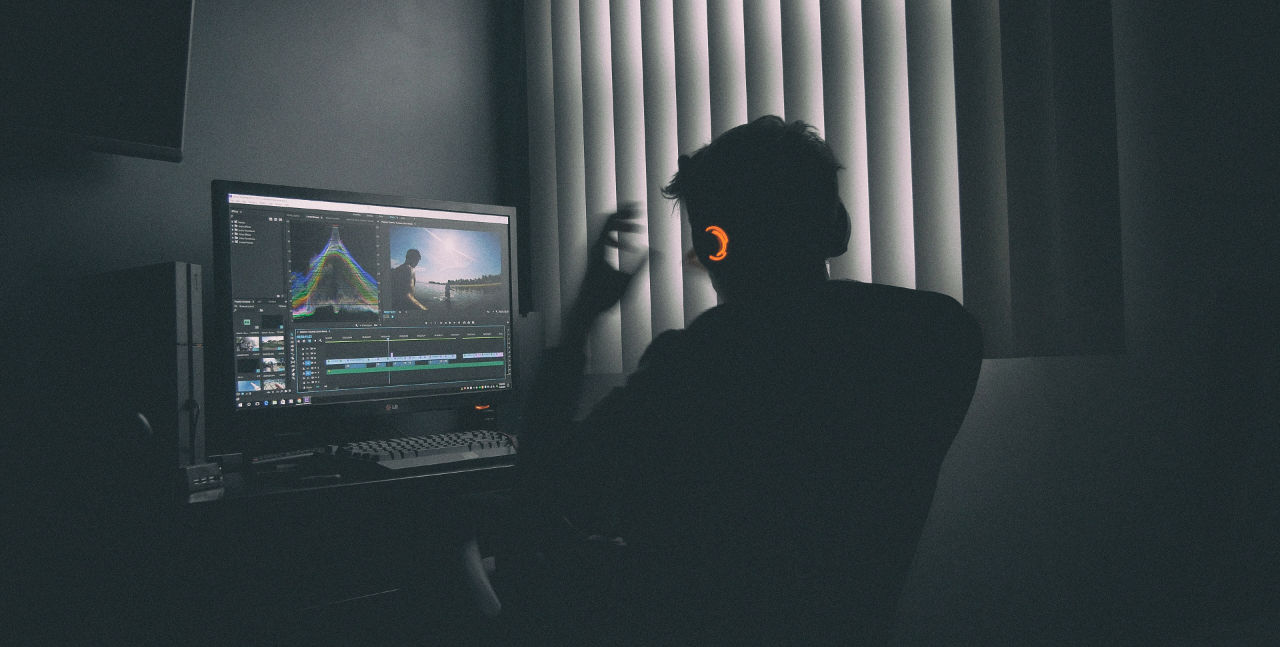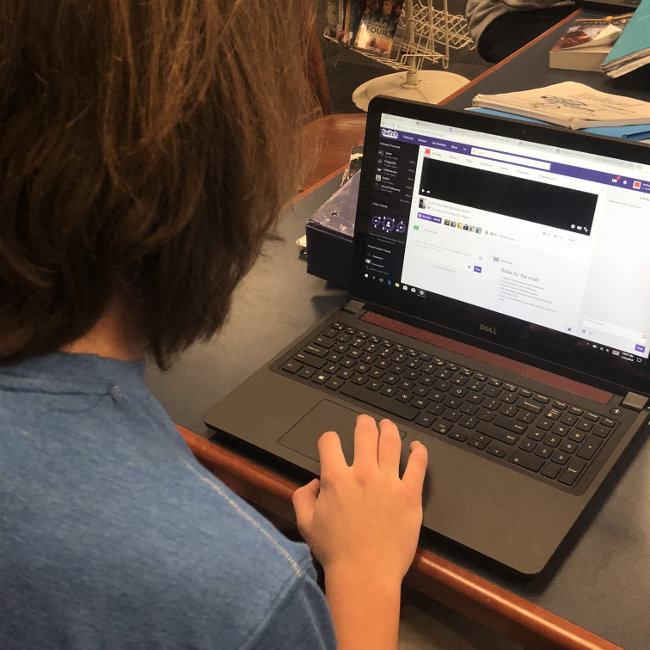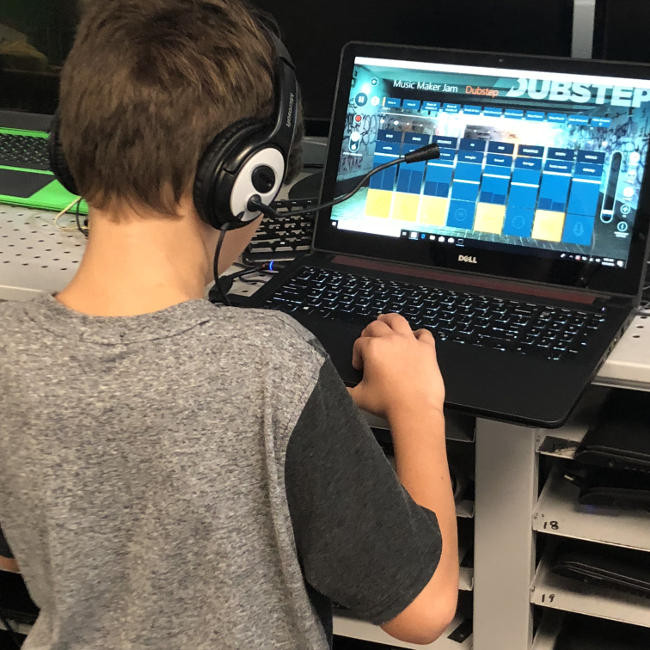From Consumers to Producers: Helping Kids Make Screen Time Meaningful

Over Christmas break, I spent some time with my in-laws down in Ocean City. One of my favorite people to hang out with was there: my 3 year-old-niece. She is hysterical, 3 going on 16, and she loves to watch YouTube. Her favorite types of videos to watch are people unboxing toys, cartoons, and these weird videos about families going on vacation or otherwise living their day-to-day life. I earned some cool uncle points when I showed her my YouTube channel. She thought it was the neatest thing and asked if she could be on my channel.
We did some brainstorming and decided to make a video of us giving a tour of my in-laws house, which is another popular YouTube videos kids watch. Then we roughly planned out how the video would go: we decided on our greeting, how we would explain what we were doing to the people watching the video, what we would say about each room, and finally how we would end the video. Next, she helped me set up the tripod to hold my phone, hit the record button, and ran into frame to start the show. After we finished the video, I uploaded it to my computer where she helped me decide what special effects and texts we needed to put into the video to get people to “like and subscribe.”
This is my new favorite example to help people understand the truth about screen time: not all screen time is created equally.
Passively consuming videos is completely different than becoming a producer of content – or a content creator, as the kids say. The skills that you develops as a content creator are applicable across a wide range of disciplines and creating content helps kids develop valuable skills and a growth mindset that will likely help them be successful in other areas away from the screen.
This is why I’ve decided to allow content creation into my entrepreneurship program, Fair Haven Innovates, this year. In our 7th grade business, FH Grows, students help sell our produce to people and restaurants in our community. When we’re not working in the gardeners or the weather doesn’t cooperate, students work on “inside projects” that revolve around the United Nation’s Sustainable Development Goals (SDG). About a dozen kids in FH Grows this year have chosen to raise money and awareness for their SDG by starting educational YouTube channels or Twitch streams.

Twitch, where people can watch other people play video games, has been the most popular choice. Twitch gives gamers the ability to live stream their play sessions. People can watch live, chat, and even donate to streams and streamers they enjoy. When students first approached me about the idea of streaming, I was hesitant. I had done it with my high school students once upon a time, but I wasn’t sure how middle school kids would handle it. There was only one way to find out.
We established some ground rules: streaming was only to be done at home. During class time, students would review their streams with me and make a plan to improve the quality of their stream and how they could grow their community.
Tools and ideas to transform education. Sign up below.
The first few weeks of streaming went well. The kids were excited and they were producing content on a regular basis. However, it was clear that I did not provide enough structure for my kids as streams weren’t improving as fast as I thought they should.
Since creating the checklist and rubric, student streams have improved drastically. I took the rubric and checklist and used them with my eighth grade content creators in FH Leads.
In FH Leads, our business incubator, students can start their own business and take it with them when they graduate (we’re K-8). Similar to 7th grade, this year I had 8th graders making the case that content creation was a legitimate business opportunity. Students saw it as investing in themselves or turning themselves into a brand. Like 7th graders, I let 8th grade give it a go. Now I have 8th graders who are starting their own Twitch streams and YouTube channels and treating themselves as a brand. I have to admit, this has been a wonderful, eye opening experience.
There is something that happens when a kids goes from a consumer to a producer because there is something special about making something. There is something special about building a following and being responsible for you own success. Even though making a living as a content creator may be a long shot, it is easy to see the pride students take in creating content. It is easy to see their skills development as they learn to edit videos, create graphics, and plan their shows, as they see them.

Putting yourself out there is not easy, and I think most people don’t understand the time, energy, and tangential learning needed to create quality content. By becoming producers, they showed me that not all screentime is created equally. I’m having my first child in May, and while I will definitely limit their screen time (all things in moderation), it is important to understand that not all screen time is created equally. Some screentime is more meaningful than others.
To help us find the structure we needed, my students and I reached out to Topher Jaims. I’d met Topher on social media as I was getting my esports team off the ground. He is a professor at Bellevue university where, among other things, he teaches introduction to streaming as part of Bellevue’s esports management program. Topher kindly shared his syllabus and grading rubric with my kids. In a Skype call, he walked us through what he teaches to first time streamers and how he grades them. From this conversation and Topher’s resources, I had my kids synthesize a checklist of things their stream should eventually include as well as a rubric we would use to assess their progress as streamers. Below is the checklist and 1-point rubric we came up with:
Until Next Time,
GLHF
cross-posted at Teched Up Teacher
Chris Aviles presents on education topics including gamification, technology integration, BYOD, blended learning, and the flipped classroom. Read more at Teched Up Teacher.
Chris Aviles is a STEM teacher, edtech specialist, and president of Garden State Esports. He is also a regular contributor to Tech & Learning.
